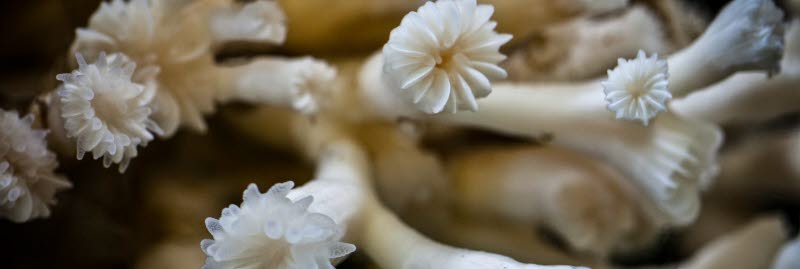How coral reefs in Kosterhavet will be recreated

Photo: Susanna Strömberg
The county administrative board for Västra Götaland and the University of Gothenburg are supporting the project, which involves manufacturing and placing artificial reef structures in the sea.
“The eye coral larvae is natural to our waters, but they need to attach to hard surfaces that protrude from the bottom in order to thrive and grow into coral reefs,” says Anita Tullrot, project manager for LIFE Lophelia on the county administrative board for Västra Götaland.
At the University of Gothenburg's marine laboratory in Tjärnö, work is underway on designing the artificial structures, by breeding coral larvae to test what attracts them.
“We investigate different materials and surface structures to see what the larvae prefer to attach to. We also believe it is important how we design the artificial reefs so that favorable streams and swirls are formed that facilitate larvae to become attached,” says Ann Larsson, who is responsible for research at Gothenburg University
Höganäs' production of metal powder also produces residual by-products which have high surface complexity and contain lime. Part of the project will investigate whether these products may be suitable for use in the artificial reef structures.
“I am constantly trying to find new uses for Höganäs' residual products as part of our efforts to contribute to a circular economy. Being able to participate in and contribute to a better environment through this project feels very important and good,” says Björn Haase, who is responsible for Höganäs' work with residual products.
Today, 80 percent of Höganäs' residual products are used as raw materials in new products, for example as soil improvers, asphalt raw materials and insulation.
Facts
|
||
More information:
Lifelophlia.se (Swedish website)
Höganäs sustainabilityreport
